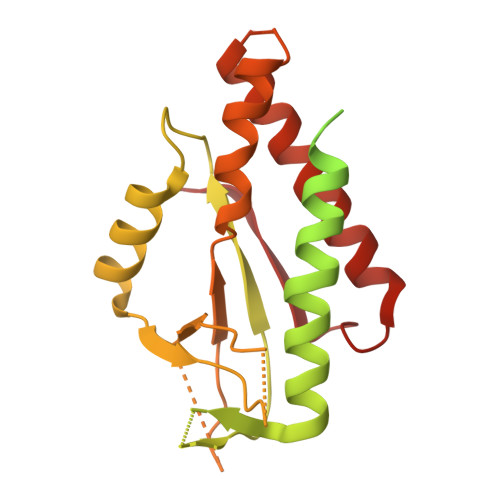Cryo-EM structure of an active bacterial TIR-STING filament complex.
Morehouse, B.R., Yip, M.C.J., Keszei, A.F.A., McNamara-Bordewick, N.K., Shao, S., Kranzusch, P.J.(2022) Nature 608: 803-807
- PubMed: 35859168
- DOI: https://doi.org/10.1038/s41586-022-04999-1
- Primary Citation of Related Structures:
7UN8, 7UN9, 7UNA - PubMed Abstract:
Stimulator of interferon genes (STING) is an antiviral signalling protein that is broadly conserved in both innate immunity in animals and phage defence in prokaryotes 1-4 . Activation of STING requires its assembly into an oligomeric filament structure through binding of a cyclic dinucleotide 4-13 , but the molecular basis of STING filament assembly and extension remains unknown. Here we use cryogenic electron microscopy to determine the structure of the active Toll/interleukin-1 receptor (TIR)-STING filament complex from a Sphingobacterium faecium cyclic-oligonucleotide-based antiphage signalling system (CBASS) defence operon. Bacterial TIR-STING filament formation is driven by STING interfaces that become exposed on high-affinity recognition of the cognate cyclic dinucleotide signal c-di-GMP. Repeating dimeric STING units stack laterally head-to-head through surface interfaces, which are also essential for human STING tetramer formation and downstream immune signalling in mammals 5 . The active bacterial TIR-STING structure reveals further cross-filament contacts that brace the assembly and coordinate packing of the associated TIR NADase effector domains at the base of the filament to drive NAD + hydrolysis. STING interface and cross-filament contacts are essential for cell growth arrest in vivo and reveal a stepwise mechanism of activation whereby STING filament assembly is required for subsequent effector activation. Our results define the structural basis of STING filament formation in prokaryotic antiviral signalling.
Organizational Affiliation:
Department of Microbiology, Harvard Medical School, Boston, MA, USA.















